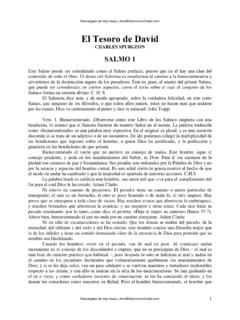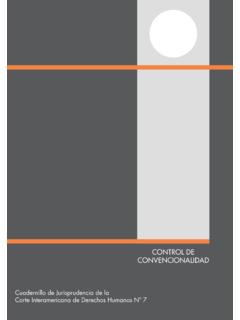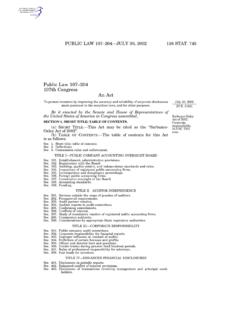Transcription of A THE HISTORY AND TRADITIONS OF THE PEEK …
1 THE HISTORY AND TRADITIONS OF THE PEEK family . Since the first half of the fourteenth century, when surnames started to come into use, the name Peek, with its variations Peeke, Peke, Pyke and Pike, has been borne by numerous families scattered throughout Devon and elsewhere in the West Country. This edition of "Peek of Hazelwood", like the first compiled in 1964, deals mainly with the families descended from John Peek of Hazelwood (Halsenwood) (1753-1847). The branch of the Peek family to which he belonged had, however, been established in one small area of Devon since earliest recorded times, and the connection remains to this day. The area in question comprises the district of South Hams and the hundreds and divisions of Coleridge, Stanborough and Ermington; from Blackawton and its neighbouring parishes of Halwell and Cornworthy during the sixteenth and seventeenth centuries (and probably earlier), then to Modbury for the greater part of the eighteenth century and finally, in the 1770s, to Loddiswell and Kingsbridge.
2 Members of the family have owned the Hazelwood estate at Loddiswell for over one hundred and fifty years. On 25 February 1833 a document was submitted to the College of Arms and attested before Lancaster Herald by John Peek of Halsenwood Villa, Loddiswell, co. Devon, gent, and his second son, Richard Peek, High Sheriff of London and Middlesex 1832-33, to support the grant of Arms to the former on 28 June 1832. The document gave details of all John Peek's children and grandchildren born up to 1832, as well as his father and grandfather. The last-mentioned, Richard Peeke, was born in 1689/90 at Allely (now Allaleigh; originally AEl(l)a's leah, and first mentioned in 1238), a hamlet in the parish of Cornworthy near Dittisham, Devon, but lived for most of his life at Modbury, some ten miles away.
3 He was married to Abigail Cowle at Modbury in January 1714/15 and died there in 1763. John Peek of Hazelwood's great-grandfather, John Peeke, is stated in the 1833 pedigree to have had numerous children, to have possessed "great landed property in the parish of Cornworthy" and "to have once held the office of High Sheriff of Devon". The last of these statements appears to be completely untrue, as there is no evidence that any member of the Peek family or of those families closely related to the Peeks ever held the office of High Sheriff during the seventeenth century. It is, of course, possible that one of them may have held a minor office in the county of which there is no extant record.
4 John Peeke of Halwell and Cornworthy, who was born on 1 November 1657 at Halwell (two miles from Allaleigh), married twice. By his first wife Mary nee Robbins, whom he married at Harberton, near Ashprington, Devon, in April 1680, he had four children, the youngest of whom, Richard Peeke, grandfather of John Peek of Hazelwood, was baptised at Cornworthy in March 1689/90 a few months before his mother's death in August 1690. In April 1694 John Peeke married Mary White at Cornworthy and had at least two more children. The "great landed property- no doubt refers to the forty-five acre Allaleigh Wood as well as other properties in the parish of Cornworthy associated with the families of John Peeke's two wives.
5 Allaleigh Wood was owned by Henry Robbins of Ashprington, almost certainly grandfather of John Peeke's first wife Mary, and sold by Henry Robbins in September 1679 for E300. Gitcombe, which adjoined Allaleigh Wood in the south of Cornworthy parish, was sold in 1659 by John Parrett, who was closely related to Henry Robbins' wife Elizabeth nee Parrett. The family of John Peeke's second wife also possessed properties in Cornworthy. At least three Whites were assessed for hearth tax there in 1674, along with Edward Robbins and various members of the Parrett family . The above-mentioned John Parrett and Edward White had been assessors for the subsidy roll at Cornworthy in 1647.
6 There is also a record dated 1704 referring to "land in Allely (Allaleigh) formerly of Edward White, senior, deceased". It is likely, therefore, that John Peeke enjoyed the inheritance of both his wives in Cornworthy. Two family TRADITIONS are mentioned in the 1833 document, but investigations have shown that neither has any basis in fact. One tradition held that the ancestors of the Peeks were members of the old Norman family of de Lucie (de Loiset) descended from an admiral in the service of William the Conqueror. Their first settlement in Devon is stated to have been the manor of Sutton Lucy in the parish of Widworthy, east Devon. This was held by the de Lucie family for several centuries, but the line eventually died out.
7 The family arms bore two luces (from the Latin lucius, a full-grown pike), and it was suggested that when the old Norman houses began to anglicise their names at the end of the thirteenth century de Lucie became Pyke or Pike and eventually Peek. Unfortunately, as will be explained further on, the name Peek almost certainly had a much more prosaic origin. The second tradition held that the first member of the family to which John Peek of Hazelwood belonged came over from Holland with Prince William of Orange along with several hundred young gentlemen and yeomen and settled at Cornworthy. Prince William landed at Brixham on 5 November 1688, only seventeen months before John Peek's grandfather Richard Peeke was born at Allaleigh to John and Mary Peeke of Cornworthy.
8 The registers of Cornworthy and the neighbouring parishes of Halwell, Blackawton, Ashprington, Harberton, Moreleigh, East Allington and Dittisham (as well as others slightly further afield such as Ugborough, Modbury, Loddiswell and West Alvington) list the names of dozens of Pekes, Peekes, Pykes and Pikes whose families had been settled in the area without a break for two or more centuries before the landing of William of Orange, and this applies without any shadow of doubt to John Peek of Hazelwood's ancestors. As previously mentioned, his great-grandfather, John Peeke of Halwell and Cornworthy, was born at Halwell on 1 November 1657 and lived at Allaleigh in Cornworthy parish from his marriage onwards.
9 Furthermore, this John Peeke's father, Richard Peeke of Abbotsleigh, was baptised at Halwell in 1618 the son of yet another Richard Peeke (Peke) and his wife Jane, who was herself a member of a well-known local family . How then could John Peek of Hazelwood and his son Richard, when giving evidence of their ancestry to the College of Arms in 1833, suggest that their forbear of only three or four generations back had suddenly arrived in Cornworthy as a stranger from a foreign country when persons of the same name had been settled in that part of Devon for centuries past? By coincidence, however, there have long been families bearing the name Peek in Holland (there is to this day a well-known department store in Amsterdam named "Peek and Cloppenburg"), but the Centraal Bureau voor Genealogie in The Hague has confirmed that this name is of purely German origin and that they have no record of any English Peeks associated with their country.
10 The founder of the department store, Johann Theodor Peek, came from Gronheim. A possible reason for the rise of the tradition mentioned in the 1833 document may be found in Macaulay's account of the landing of William of Orange in 1688. Both his army and his fleet, the latter commanded by an English admiral, contained, along with contingents of various other nationalities, many English gentlemen and yeomen all actively opposed to the religious policies of King James II. William's armada was received with open arms. According to Macaulay, the peasantry of the coast of Devon crowded down to the seaside with provisions and offers of service. The day after the landing, Tuesday, 6 November, saw William's army marching up country, some regiments advancing as far as Newton Abbot.





